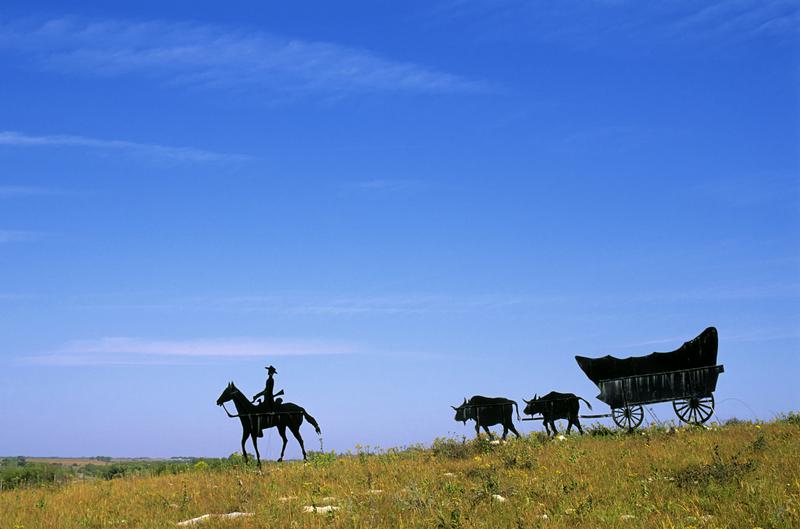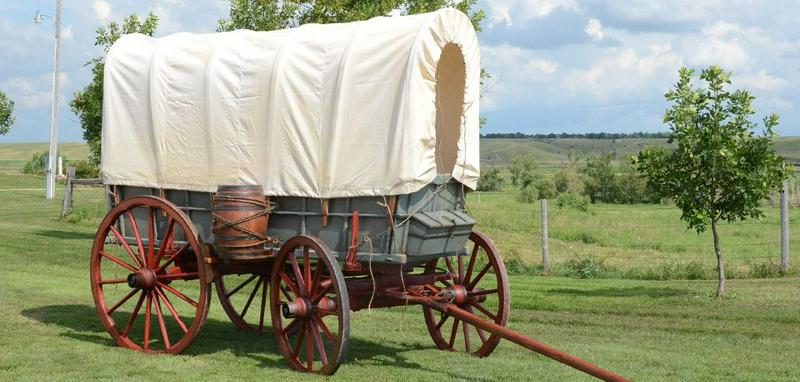8 Things You Didn't Know About Real-Life Covered Wagons
By | May 17, 2019

Every movie and television show about the old west and the pioneer days includes covered wagons. You know covered wagons, you were probably forced to make them in elementary school, or, even worse, to play "Oregon Trail" at some point, of which you remember very little other than inadvertently learning what dysentery was. These canvas-topped, horse-drawn wagons have become a symbol of the pioneering spirit of Americans during the westward expansion of the 1800s. From the Louisiana Purchase to the California gold rush to the Homestead Act, the 19th century was a vast migration of people from the crowded East Coast cities to the untamed wilderness of the Great Plains and the western states. Before the introduction of the railroad, the covered wagon was the favorite mode of transportation for the pioneers. But covered wagons weren’t all they were cracked up to be. Let’s look at what you didn’t know about covered wagons.

There were at Least three main kinds of covered wagons
Although innovative pioneer families made their own versions of covered wagons using ox carts or peddler’s carts, there were three main types of covered wagons that were used to transport settlers across the country. The Prairie Schooner, the classic covered wagon, was designed to carry the family’s belongings over great distances. It was called the Prairie Schooner because the white canvas covers looked like the sails of schooner ships from a distance. The Conestoga wagon was much larger and had to be pulled by a team of six horses. It was too big and heavy to be used for cross country trips, so it was primarily used for short distances. The chuck wagon was a much smaller covered wagon that served as a mobile kitchen for large groups of travelers heading west.

Prairie Schooners were not early campers
We may have an image in our heads about early pioneers settling to sleep each night, safely tucked into beds inside their covered wagon. But this is not accurate. The wagons were surprisingly small, measuring only about four feet wide and eight or nine feet long. That means the entire wagon was narrower than a full-size bed and only a little bit longer. All of the family’s belongings had to be packed into the wagon, leaving no room for beds. While traveling, the families either camped under the open stars or slept on the ground beneath the wagon.

No Horses Needed
The larger, heavier Conestoga wagons needed a team of horses to pull them, but for pioneers heading west across the prairie, horses were often a luxury they couldn’t afford. The Prairie Schooners were light enough to be pulled by mules or oxen, animals that would be much more useful once the settlers found their homestead.

Keeping out the rain
The white canvas cover called a bonnet, that was stretched across arched wooden bows of the wagon was meant to protect the contents of the wagon from rain and dust. Westward travelers used a 10-ounce canvas made of cotton duck fabric. To make it waterproof, the canvas was coated with linseed oil. Drawstrings on either end allowed the bonnet to be closed at least part of the way if a storm came up.

A rattling, top-heavy journey
The Prairie Schooners had to be packed carefully with the heaviest items at the bottom. The wagons had a high center of gravity which made them prone to tipping over. Conestoga wagons were worse. The size and heaviness of them made them more unstable on the trail. Both types of wagons gave the passengers a bumpy, jarring ride. Riding in the wagons, in fact, was so uncomfortable that most people preferred to walk beside them.

River-crossings in covered wagons
Getting to the other side of rivers and creeks was a big obstacle for pioneers traveling in covered wagons. Larger rivers often had ferry crossings that transported entire wagons across to the opposite shore, but smaller rivers did not. Settlers would either have to construct a raft to carry their wagon across the river or drive the wagon through the water. Naturally, they would first scout the river to try to find the most narrow and shallowest crossing point. The wagon beds were treated with wax to seal up as many cracks as possible, so the wagon bed acted almost like a boat once the wheels no longer touched bottom. Still, fording rivers was extremely dangerous for settlers.

When covered wagons would break down
Covered wagons were solidly built, but that didn’t mean they were infallible. Breakdowns occurred all the time. Wooden parts broke, as well as metal parts. Roadside repairs were the only way to get the family moving again. It often involved taking everything out of the wagon so it could be fixed… a long and tedious process.

Covered wagons moved our country West
Prairie Schooners were not the ideal form of transportation, but for the pioneers of the 1800s, it was their only real option. Despite the images we see on TV, the Prairie Schooners were slow, bone-jarring, cramped wagons, however, they were responsible for facilitating the westward expansion of the United States despite their flaws.

